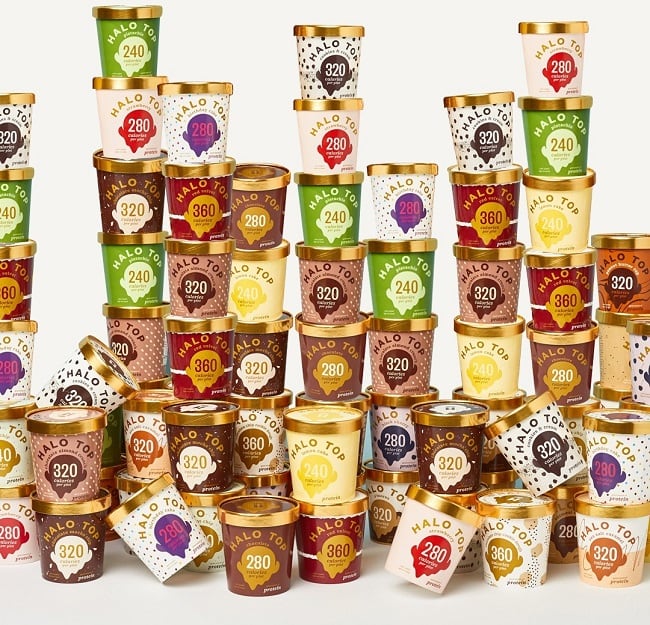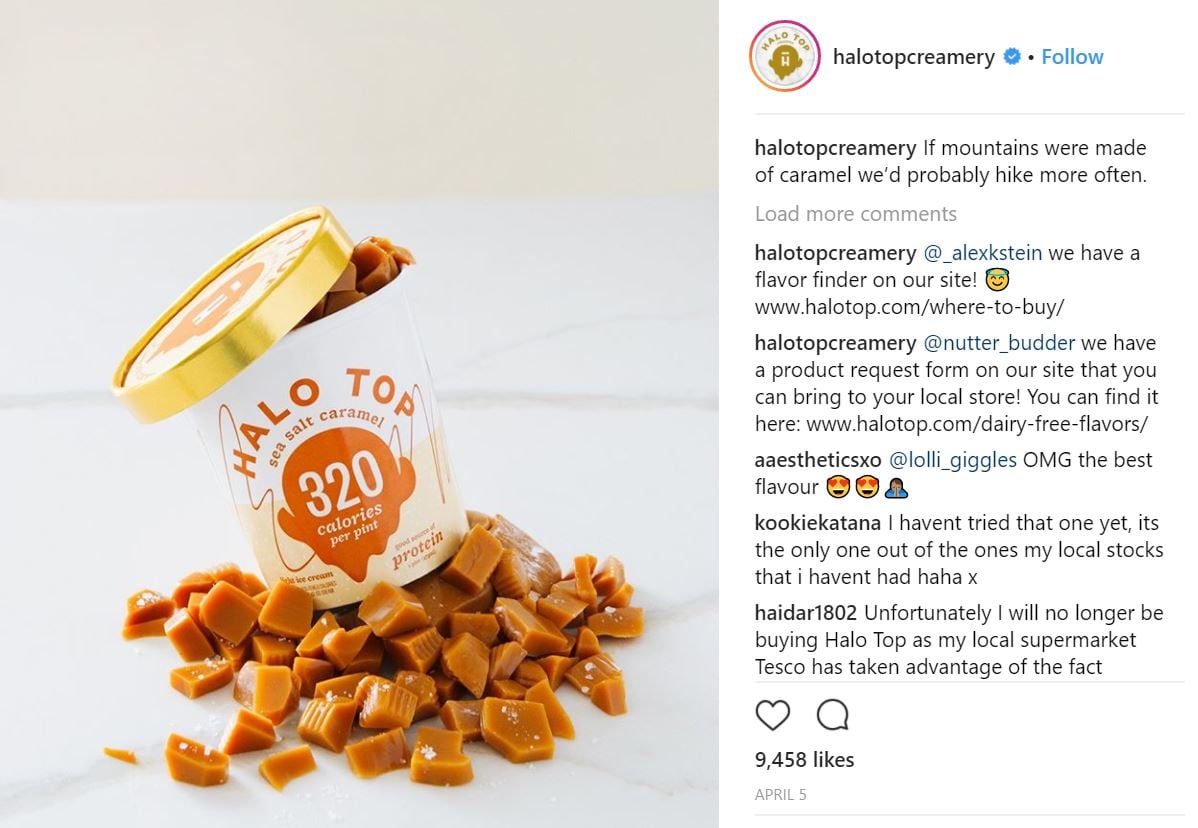“The term ‘diet’ certainly has become a stigma. In other food and drink categories, quite a few brands are working to de-emphasize specific diet and weight loss claims, shifting their brand positioning and focus to be about general health,” Mintel food and drink analyst, Michael Averbook, told FoodNavigator-USA.
“Halo Top presents itself first and foremost as fun, flavorful, and decadent. Simple and guilt free is secondary.”
Halo Top - a low calorie ice cream with added protein sweetened with a blend of erythritol, organic cane sugar, and organic stevia leaf extract - is reported to have recorded a 2,500% increase in sales between 2015 and 2016 with estimated revenue of $66m in 2016. The company sales topped $324.2m in 2017, according to IRI total year, multi outlet dollar sales data. In July 2017, it became the best-selling pint of ice cream in the US over a four week period, according to IRI data 4 weeks ending 07-16-17, Dollar Sales, Total US Food.

Mintel global food & drink analyst, Patty Johnson, added: “Halo Top has taken market share by proving that consumers can have it all—taste, indulgence, and health.”
Low-fat, low-sugar alternatives aren’t exactly a new idea in the ice cream category, but Halo Top has managed to pivot the image of those products.
“Better-for-you (BFY) products in indulgent categories are not a novelty. Halo Top didn't invent the model, but they did refresh it, sparking a refocus in product development activity from ice cream brands large and small,” Averbook said.
Ice cream giants have taken note of Halo Top’s success, responding with similarly positioned products.
In July 2017, Breyers launched its ‘delights’ line in four flavors ranging from 260 to 330 calories per pint (sweetened mainly with erythritol and less than 2% of sugar and Reb A stevia leaf extract). Ben & Jerry’s also launched its Moo-phoria range of ‘light ice cream’ in February 2018 with 140 to 160 calories per ½ cup serving (560 – 640 calories per pint). And in the same month as Ben & Jerry’s, Talenti debuted its line of better-for-you ice gelato ‘crafted with less sugar’ weighing in at 120 calories per ½ cup (480 calories).
Permissible indulgence
US consumers’ desire to not feel deprived while watching what they eat has allowed for “permissible indulgent” moments and Halo Top fills that need well with a brand name that even conveys virtue, according to Mintel.

“Although often tongue in cheek, Halo Top certainly takes granting permission to new levels,” Averbook said.
“While they don't quite suggest eating the entire pint, they grant immunity if that should happen, as if to say, ‘We've all been there.’ This is a great way to connect with consumers on a personal level.”
Halo Top has also engaged a large following on social media as its eye-catching pints have become ‘Instagrammable’ snapshots among the millennial set and the company’s Instagram account has amassed nearly 700k Instagram followers, adding to the brand hype.
“Halo Top’s shrewd use of social media has taken it to a different level,” Johnson added.
Additionally, Halo Top’s edge is that it is more likely to attract new users to the category, Mintel research found. According to Mintel Purchase Intelligence, Halo Top Pints perform on par with the ‘Ice Cream Pints Benchmark’ on overall purchase intent – 11% of those with positive purchase intent claim that this would be a new purchase.
Consumers still counting their calories
Calorie restricting and point-based systems were the hallmarks of diets going back decades and Mintel has found that calorie counting is still the most popular way US consumers (50%) manage their weight – nutrient-based diets came in last with 18% saying they follow this type of diet regime.
Halo Top has tapped into this collective consumer concern by featuring its calorie content, ranging from 280 to 360 calories for an entire pint, prominently on its packaging – “a transparent approach consumers have welcomed” that gives consumers a guilt-free pass to eat the entire container, Johnson said.
The products’ callout of “20 grams of added protein” also seems to have resonated with consumers walking the line between health and indulgence, according to Mintel.
Category expansion
Halo Top’s success combined with the concept of permissible indulgence resonating across consumer demographics indicates room for category growth in the low-calorie, high-protein, ice cream space.
“Ice cream brands should consider the use of traditional and top-selling ice cream flavors in ‘permissibly indulgent’ formulations for mass appeal,” Johnson said.
Averbook added: “Ultimately, this is an indulgent category and our data suggests that product development that focuses on indulgence and flavor appeals to the masses. No one brand is likely to be the sole driver for innovation in such a diverse and creative category.”
